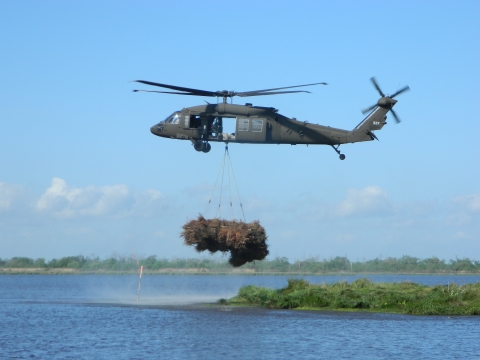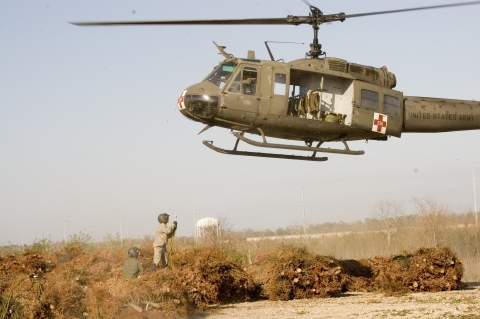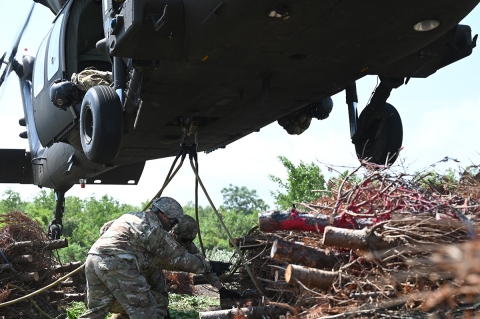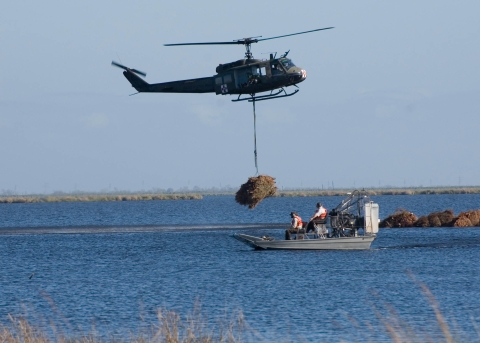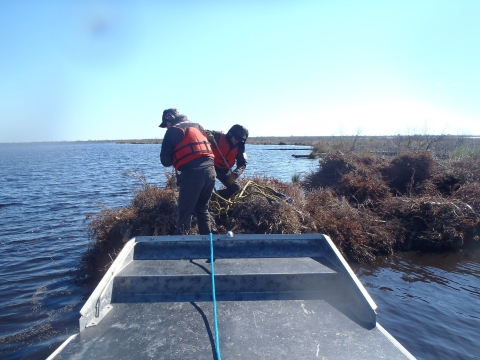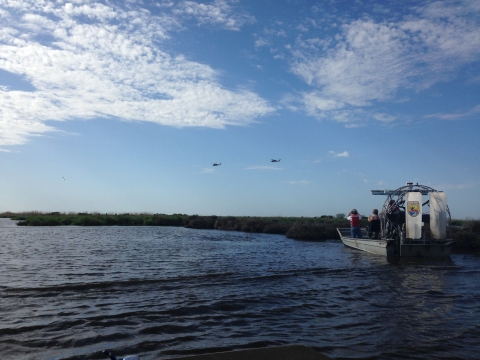Long after the lights and decorations are put away, thousands of Christmas trees are dropped from the sky at Bayou Sauvage Urban National Wildlife Refuge in east New Orleans. The Christmas Tree Drop is a yearly event that recycles New Orleans residents’ Christmas trees to build marsh habitat in the refuge.
Marshes are a type of wetland ecosystem that form along the edges of lakes and rivers that provide important services to wildlife and people! The marshes at Bayou Sauvage Urban National Wildlife Refuge provide shelter for wildlife and reduce flooding in New Orleans from destructive storms. Wind and waves from the Mississippi River erode the marsh shoreline at the refuge. As it erodes, those important services are lost, and wildlife and residents are at-risk.
Nearly thirty years ago, a graduate student wondered if Christmas trees could be used to create more marsh. She was right! When the trees are placed in shallow marsh areas, slow wave and water movement around the trees traps silt and encourages the growth of marsh grasses. The newly created marsh is a gift that keeps on giving! Not only is it important habitat for fish, crabs, crawfish and shrimp in the refuge, but it also protects New Orleans during storm and hurricane events by absorbing water and decreasing wave actions.
Service staff began working with the Department of Public Works, Office of Resilience and Sustainability, and Sanitation Department in New Orleans to collect residents’ Christmas trees and ensure they avoided the landfill.
Service staff originally used airboats to transport the trees. But what happens when you have thousands of trees, and the Louisiana Army National Guard needs to do airlift operations practice? The trees take to the skies and become a training tool!
O’ Christmas Tree, O’ Christmas Tree. How’d you end up in the refuge?
Residents of New Orleans remove everything from their trees and place them on their curbs to be collected.
The Department of Sanitation, in collaboration with the Office of Resilience and Sustainability, collects the trees from neighborhoods around the city. Each year, 4,000 to 6,000 trees are collected!
Bayou Sauvage Urban National Wildlife Refuge staff store the trees in the Refuge until the drop date.
The trees are bundled together using wire straps. Each bundle contains approximately 50-60 trees.
Once the trees are bundled, a ground crew from the Louisiana Army National Guard attaches harnesses to the bundled trees.
On the day of the operation, the Louisiana Army National Guard sends a ground crew to help attach the harnessed bundles of trees to the helicopters. Each harness can carry between 3 to 4 bundles of trees. The air crew flies these helicopters to the marsh.
The Louisiana Army National Guard airlifts the bundles of trees and drops them in shallow areas in the marsh that Service staff have chosen in advance. The challenge of this training is dropping the harnessed bundles in a straight line!
Using airboats, staff from the refuge retrieves the harnesses off the bundles of trees and returns them to the Louisiana Army National Guard.
The trees begin their new life in the marshes of Bayou Sauvage Urban National Wildlife Refuge where they will trap sediment and create new habitat for wildlife.
To date, the yearly Christmas Tree Drop has created 115 acres of marsh and remains a successful restoration tool. This project would not be possible without the hard work and collaboration of our partners: the Louisiana Army National Guard, City of New Orleans Office of Resilience and Sustainability, Friends of SELA Refuges, and various volunteers from local organizations. The Service is excited to continue working with our partners on this project to restore marshes and conserve the wildlife that depend on them.

